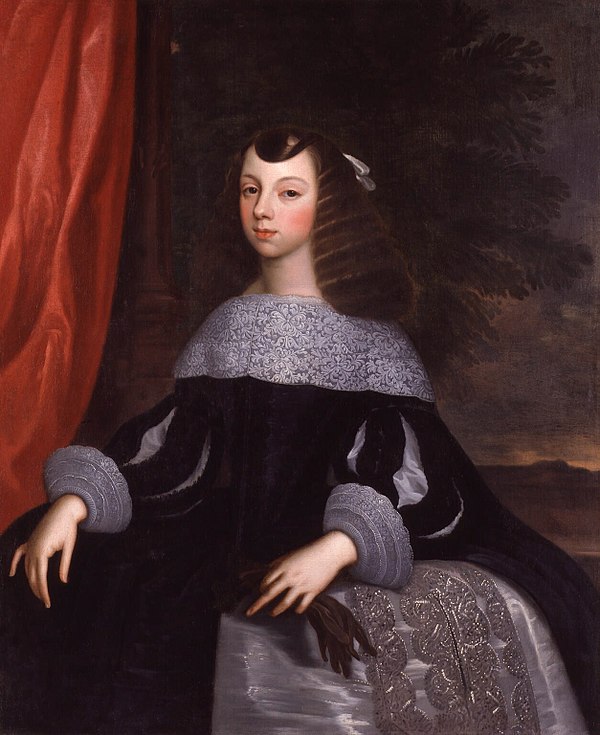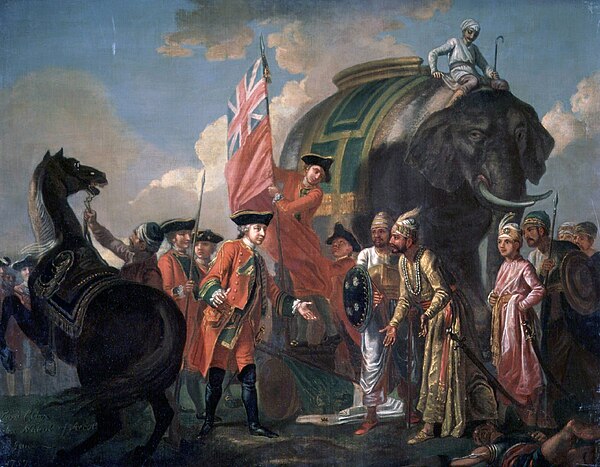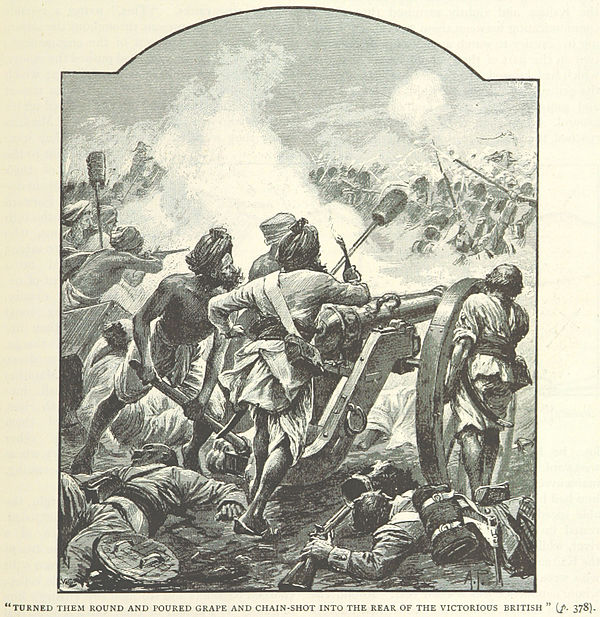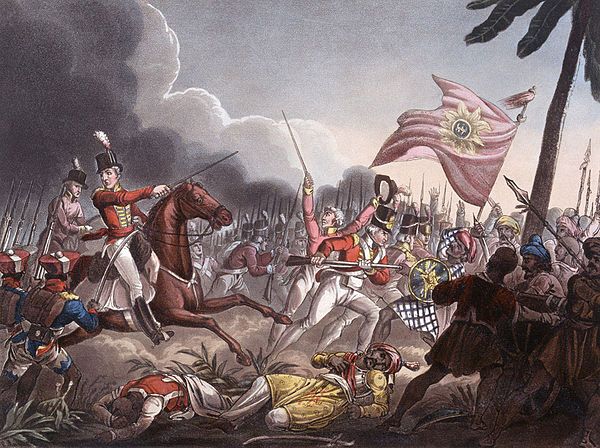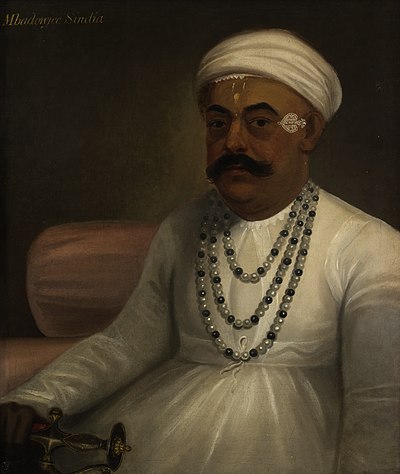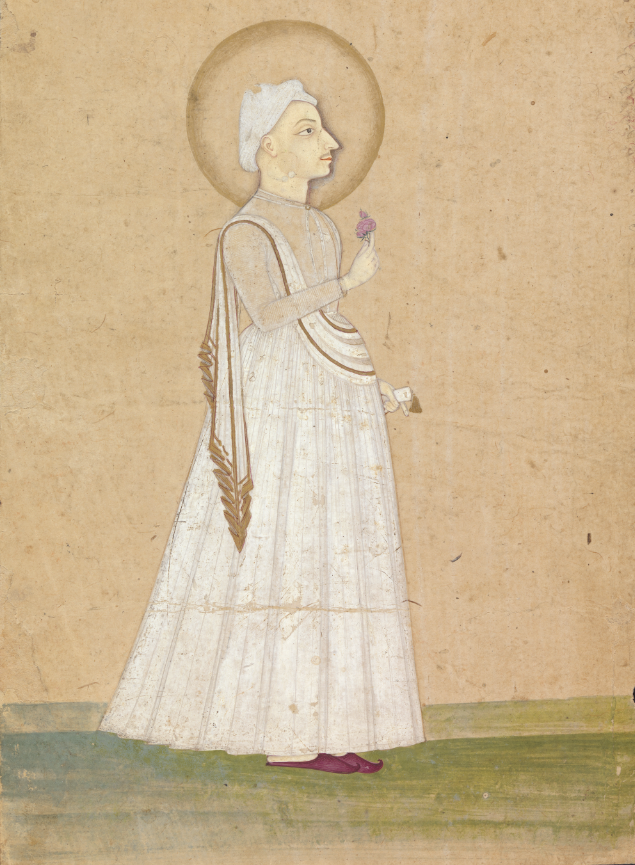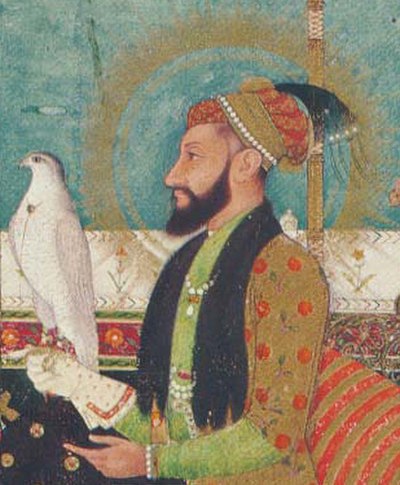The Maratha Empire at that time consisted of a confederacy of five major chiefs. The Maratha chiefs were engaged in internal quarrels among themselves. Baji Rao fled to British protection, and in December the same Year concluded the Treaty of Bassein with the British East India Company, ceding territory for the maintenance of a subsidiary force and agreeing to treaty with no other power. The treaty would become the "death knell of the Maratha Empire". The war resulted in a British victory.
On 17 December 1803, Raghoji II Bhonsale of Nagpur signed the Treaty of Deogaon. He gave up the province of Cuttack (which included Mughal and the coastal part of Odisha, Garjat/the princely states of Odisha, Balasore Port, parts of Midnapore district of West Bengal).
On 30 December 1803, the Daulat Scindia signed the Treaty of Surji-Anjangaon with the British after the Battle of Assaye and Battle of Laswari and ceded to the British Rohtak, Gurgaon, Ganges-Jumna Doab, the Delhi-Agra region, parts of Bundelkhand, Broach, some districts of Gujarat and the fort of Ahmmadnagar. The Treaty of Rajghat, signed on 24 December 1805, forced Holkar to give up Tonk, Rampura, and Bundi. Territories ceded to the British were Rohtak, Gurgaon, Ganges-Jumna Doab, the Delhi-Agra region, parts of Bundelkhand, Broach, some districts of Gujarat and the fort of Ahmmadnagar.



